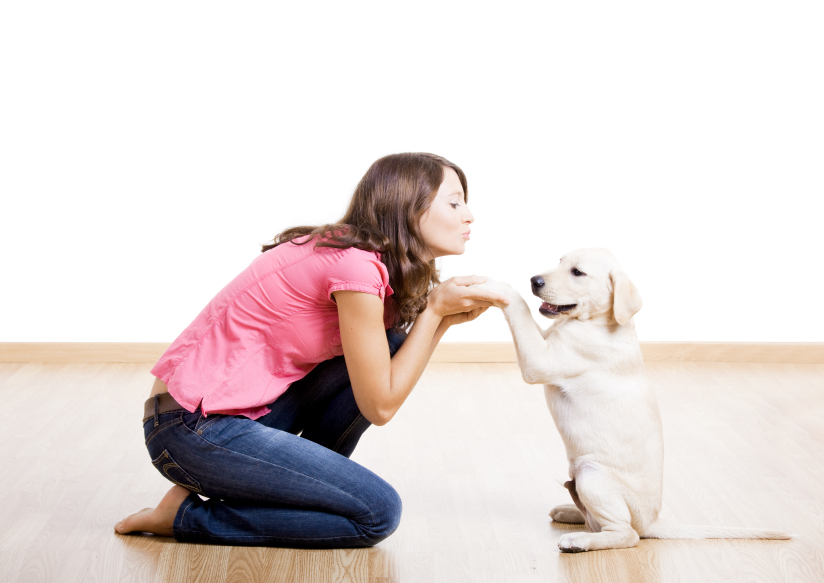Training your current dog is not just about teaching commands; it’s about building a solid bond and enhancing your pup's top quality of life. Whether you have a playful puppy dog who needs guidance or an elderly dog requiring a new little extra tolerance, effective training could transform your romantic relationship produce a well-behaved companion. With the particular right techniques, you can help your doggy learn essential skills, improve socialization, and ensure they can be content and healthy.
On this page, all of us will explore various fun and efficient methods to train designed in order to unleash your dog's potential. From learning basic commands in order to advanced leash teaching and socialization strategies, we will give you clear, actionable measures. Embracing positive strengthening and understanding the particular principles behind successful training will fixed you and your dog on a way to success. Put together to dive inside and discover techniques that will not necessarily only teach your current dog important manners but also enhance the unbreakable connection between you two.
Necessary Commands Every Dog Should Learn
Teaching your dog necessary commands is crucial for their safety as well as your peace of mind. Commands such as take a seat, stay, and are available are foundational behaviors that can support manage your dog's behavior in several situations. As an example, the sit command can prevent your dog from jumping upon guests or flowing out the doorway, while the keep command is essential for keeping your doggy in place as needed, such as in the course of vet visits or while at the store.
One other important command is leave it, which teaches your dog to disregard things or distractions of which may be hazardous or inappropriate in order to interact with. This kind of command can always be a lifesaver, particularly in situations involving unsafe objects or potentially dangerous wildlife. Moreover, teaching your dog down can offer both enjoyment handle, as it encourages them to decide down in the calm down position, making it easier in order to handle excited or anxious behavior.
Lastly, the come command is vital for your dog's safety, especially any time off-leash. This control ensures that your puppy will return to you promptly in various environments. Putting into action these key orders during training certainly not only enhances interaction between you in addition to your dog but also fosters a solid bond based about trust and responsiveness.
Positive Reinforcement Training Methods

Positive reinforcement is an extensively recognized training method that encourages desired behaviors in dogs by offering rewards for compliance. This approach fosters the loving bond between the owner as well as the pet, making coaching a positive experience. Rather than focusing on punishment for undesired behaviors, positive encouragement relies on compliment, treats, or playtime to motivate puppies to repeat good actions. By regularly rewarding your dog for obeying instructions or displaying positive behavior, you produce a place where mastering is enjoyable plus effective.
One of many key components of positive strengthening is timing. That is crucial to be able to deliver the praise immediately after your puppy performs the desired action. This assures that your canine affiliates the reward along with the behavior, reinforcing the learning process. Additionally, vary the types of rewards; while treats are often effective, some dogs may respond better to toys or passion. This variety maintains your dog interested and emphasizes that will good behavior prospects to positive results.
Positive reinforcement also entails understanding your dog's unique personality and preferences. Some dogs may be even more motivated by snacks, and some may find playtime more satisfying. Tailoring your education methods to match your dog's individual needs can improve the effectiveness of positive reinforcement. By staying patient and constant, you will not only see advancements inside your dog’s conduct and also strengthen your relationship, ultimately modifying your pup in to a well-mannered companion.
Successful Potty Training Tactics
Building a consistent routine is crucial for successful potty training. Period puppy outside often, especially after meals, naps, and play, to reinforce fine habits. Choose a new designated outdoor area for bathroom breaks or cracks to help the dog associate that area with minimizing themselves. This regular schedule not just supports in understanding in the next time to get but in addition minimizes accidents within the home, generating the training method smoother.
Positive reinforcement takes on a key function in potty training. As soon as your dog efficiently goes outside, immediately praise them using words, treats, or even even a play session. Additional resources stimulates those to associate proceeding to the bathroom outside with positive experiences. Be patient and avoid punishment intended for accidents indoors, while this can cause anxiety and confusion. Rather, clean up mishaps thoroughly to eliminate lingering odors that will might encourage duplicate offenses within the identical spot.
Consistency and persistence are vital intended for long-term success inside potty training. Understand that some puppies might take longer to learn than others. Stay attentive to your dog's cues, such like sniffing or circling, which indicate they may need to be able to go outside. When you notice any signs of distress or perhaps prolonged issues using potty training, think about consulting a trainer or veterinarian for guidance. By ensuring a supportive technique, you are able to set your own pup up regarding success in establishing good bathroom habits.
